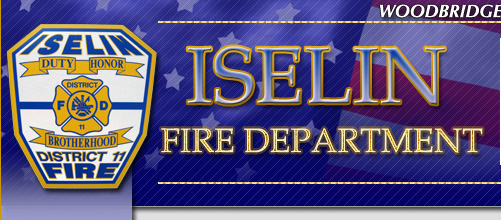| WHAT TO DO BEFORE A THUNDERSTORM
Basic Preparedness
Prepare yourself and your family by creating an Emergency Supply Kit and a Family Disaster Plan. See NJOEM's Basic Preparedness page for more details.
Your Kit includes items that will help you stay self-sufficient for up to three days, if needed.
Your Plan includes evacuation plans, a place to reunite with loved ones, and an out-of-state contact person.
Check for hazards in the yard outside your home. Dead or rotting trees and branches can fall during a severe thunderstorm and cause injury or property damage.
Know the warning signs: Look for darkening skies, dark and towering clouds, flashes of light, or increasing wind. Listen for thunder. If you can hear thunder you are close enough to the storm to be struck by lightning and should go to safe shelter immediately.
Stay Tuned: Listen to NOAA Weather Radio or your local radio and television stations for weather updates, Storm Watches or Warnings, and emergency instructions from public safety Officials.
Remember: A battery-powered radio is a vital part of your Emergency Supply Kit. You can also track current weather conditions with links available on our Current Weather/Traffic Web page.
Listen For Storm Watches And Warnings
The National Weather Service issues a Severe Thunderstorm Watch when a severe thunderstorm is likely to develop soon. This is the time to locate a safe place in the home and tell family members to watch the sky and listen to the radio or TV for more information.
A Severe Thunderstorm Warning is issued when a severe thunderstorm has been sighted or indicated by weather radar. At this point the danger is very serious. Everyone should go to a safe place, turn on a battery-operated radio or TV and wait for the "all clear" from the authorities.
Estimating The Distance Of A Thunderstorm
To estimate the distance:
Count the number of seconds between a flash of lightning and the next clap of thunder.
Divide this number by 5 to determine the distance to the lightning in miles.
The 30/30 Lightning Safety Rule:
If you cannot count to 30 seconds between a flash of lightning and the next clap of thunder, GO INDOORS.
STAY INDOORS for 30 minutes after hearing the last clap of thunder.
WHAT TO DO DURING A THUNDERSTORM
If You Are Indoors
Secure outdoor objects such as lawn furniture that could blow away or cause damage.
Shutter windows securely and brace outside doors. Draw blinds and shades over windows. If windows break due to objects blown by wind, the blinds will prevent glass from shattering into your home.
Listen to a battery-powered radio or television for the latest storm information, and for instructions from Public Safety Officials.
DO NOT HANDLE corded telephones or electrical appliances! AVOID bathtubs, water faucets and sinks! Telephone lines, electrical lines and metal pipes can all conduct electricity!
Turn off the air conditioner. Power surges from lightning can overload the compressor, resulting in a costly repair job.
If You Are Outdoors
Stay away from bodies of water. If you are boating or swimming, get to land immediately!
Try to get into a building or car - but avoid convertibles.
If no structure is available:
Find a low spot away from trees, fences and poles. Make sure the place you pick is not subject to flooding!
Stay away from natural lightning rods such as golf clubs, tractors, fishing rods, bicycles, or camping equipment.
If you are in the woods, find an area protected by a LOW clump of trees. NEVER stand underneath a single large tree in the open.
IMPORTANT: As quickly as possible, make your body the SMALLEST target possible and MINIMIZE your contact with the ground:
SQUAT VERY LOW to the ground with your HANDS ON YOUR KNEES, only touching the ground with your feet.
DO NOT lie down!
If You Are In A Car
Pull safely onto the shoulder of the road away from any trees that could fall on the vehicle.
Stay in the vehicle and turn on the emergency flashers until heavy rains subside.
Avoid flooded roadways. (Remember: Turn Around, Don't Drown!)
The rubber tires will NOT protect your car from being struck by lightning. However, the steel frame of a hard-topped vehicle will provide increased protection if you are NOT touching metal in the car. You are much safer inside a vehicle than outside.
WHAT TO DO AFTER A THUNDERSTORM
If Someone Is Struck By Lightning
Call for Help. Call 911 or your local Emergency Medical Services (EMS) number. Medical attention is needed as quickly as possible.
Give First Aid. If breathing has stopped, begin rescue breathing. If the heart has stopped, a trained person should give CPR. IF the person has a pulse and is breathing, look and care for other possible injuries.
Check for Burns in Two Places. The person may be burned, both where they were struck and where the electricity left their body.
Being struck by lightning can also cause nervous system damage, broken bones, and loss of hearing or eyesight.
Remember: It is NOT dangerous for you to touch a person who has been struck by lightning. The person does not carry an electrical charge that can shock other people.
After The Storm Passes
Continue listening to local radio or TV stations or a NOAA Weather Radio for updated information and instructions. Access may be limited to some parts of the community, or roads may be blocked.
Check on neighbors who may require special assistance - infants, elderly people and people with disabilities. People who care for them or have large families may need additional assistance caring for several people in emergency situations.
Stay away from storm-damaged areas. Avoid putting yourself at risk from the residual effects of thunderstorms.
Watch out for fallen power lines and report them immediately. Reporting potential hazards will get the utilities turned off as quickly as possible, preventing further hazard and injury. |


